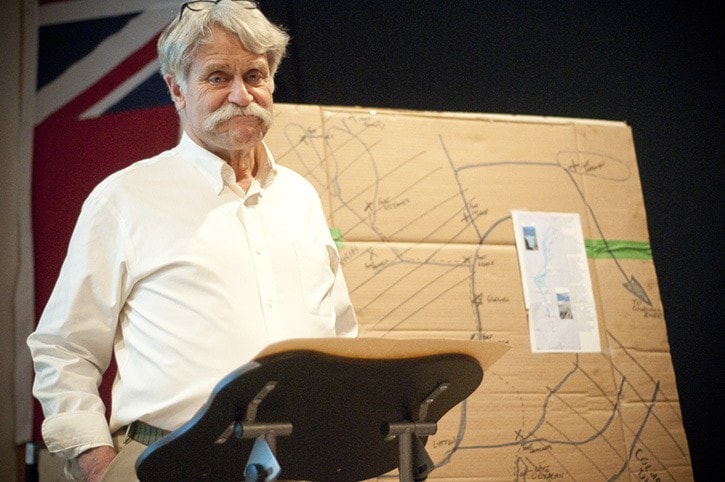Jeff Dinsdale of Quesnel visited Fort St. James to give a talk on the history of mushing in north-central B.C..
Dog mushing has been around in Canada for a long time, according to Dinsdale, with the Inuit in the north using sled dogs for over 4,000 years.
The Carrier peoples of New Caledonia and beyond, however, he does not believe were using sled dogs prior to their introduction by the fur traders, who brought them from northern Alberta to help carry furs and supplies across the north in the winter.
"As far as British Columbia is concerned, this is where it all started," said Dinsdale.
Over the years, sled dogs and their sleds evolved. Early sleds were fairly rudimentary, beginning with toboggans made out of two eight-inch boards.
In the early years, the dog teams were small, usually as few as four dogs or less made a team.
Mushers had to run, walk or snowshoe alongside or behind the sleds, with nowhere to stand on the back of the sleds, and steering control was limited.
Sled dogs were instrumental in the fur trade, in the Collins Overland Telegraph Line, and the railway line. Surveyors of both line systems used sled dogs for their work.
The talk ended with a fantastic demonstration of the traditional clothing from the late days of the fur trade, with a coat made from a wool blanket, leggings, and traditional ties and wraps to keep the snow out and warmth in.
Over 30 people attended Dinsdale's talk, put on by the Fort St. James Sled Dog Association. Entry was by donation, with proceeds going towards the association's Caledonia Classic races set for February 22-24, 2013.
